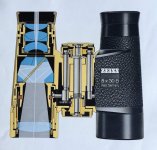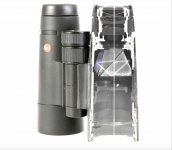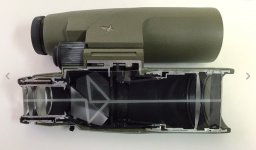Hi -
My Zeiss Pocket and my Ultravid x42 both seem to have collinear oculars and objectives, or at least the casings appear collinear (cylinders strung on the same line) .
I wonder whether all usual roof binoculars have collinear oculars and objectives, whether this is a necessity or just a usual design decision?
Porros of course have an offset between objectives and eyepieces by design.
Edmund
My Zeiss Pocket and my Ultravid x42 both seem to have collinear oculars and objectives, or at least the casings appear collinear (cylinders strung on the same line) .
I wonder whether all usual roof binoculars have collinear oculars and objectives, whether this is a necessity or just a usual design decision?
Porros of course have an offset between objectives and eyepieces by design.
Edmund












